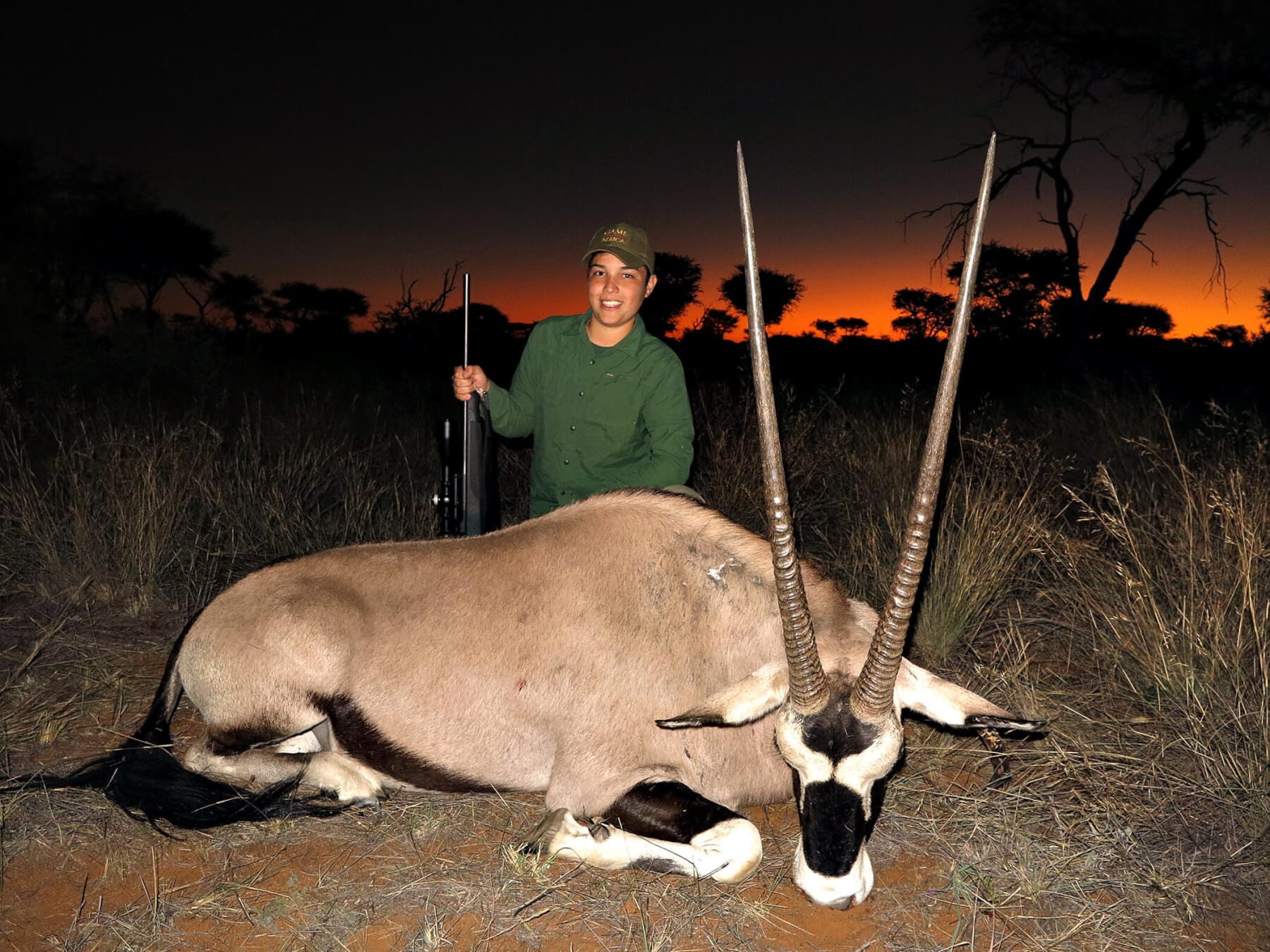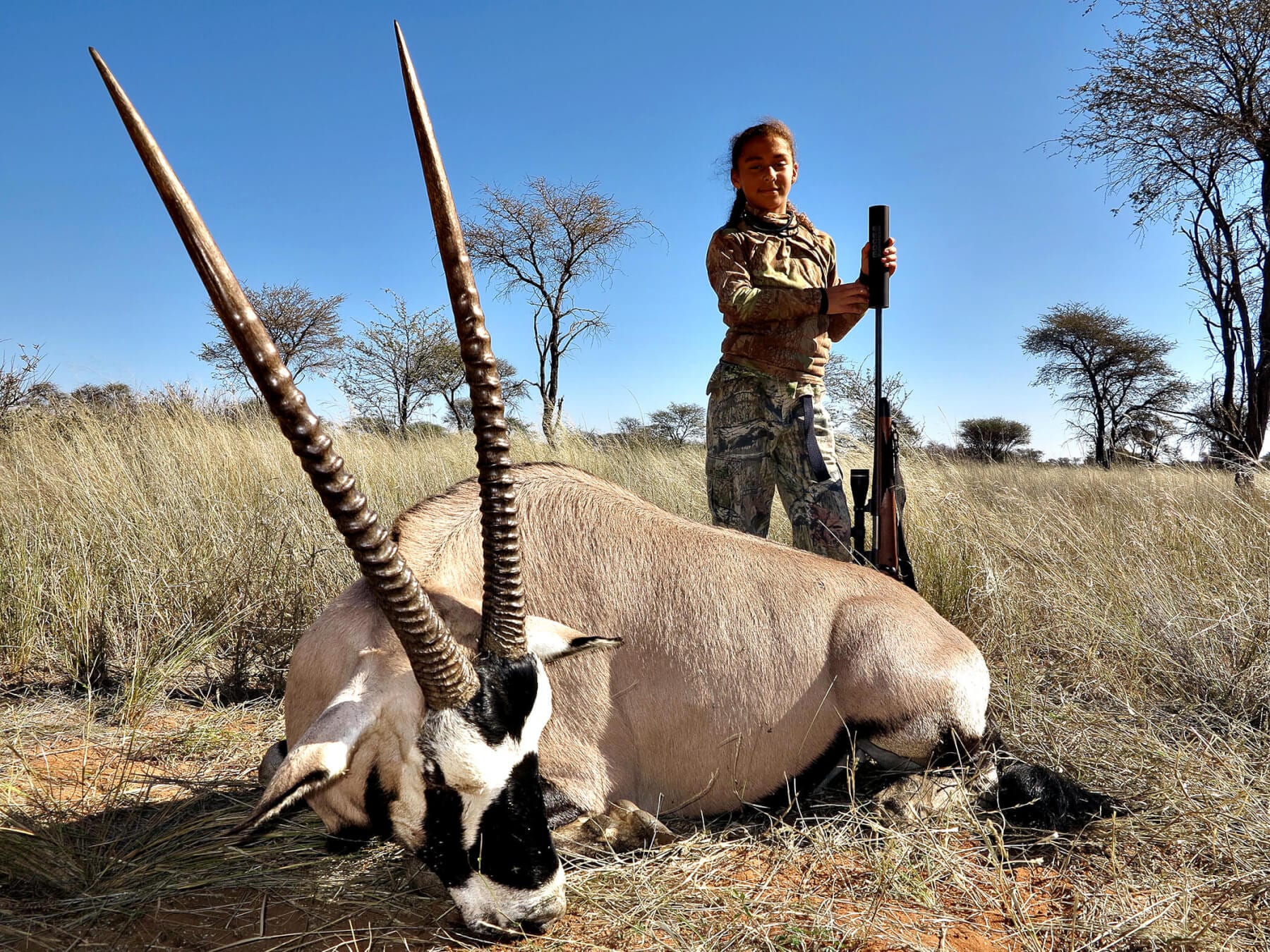Namibia has some of the best plains game hunting in the world. The most famous of which is the Gemsbok (Oryx), one of the most popular and sought after trophies in Namibia.
A native of the Kalahari, they can go without surface water for months, absorbing moisture from what they eat. A social herd animal, they are primarily a grazer. Extremely aggressive and very dangerous when injured, cornered, or threatened, both sexes carry very long rapier-like horns. The female (cow) of the species tends to be slightly smaller in body. Her horns, however, though more slender, are most often longer than those of the male (bull). The cow’s horns tend to curve slightly backward, while the bull’s horns are thicker and straighter. In assessing the trophy, remember that the cow’s horns tend to be longer and will often out-score the bull. Normally their scrotums can identify males, but when the Kalahari had a good rain season and the grass reaches their bellies, it can be quite difficult to know them apart...so your guide is a key asset.




